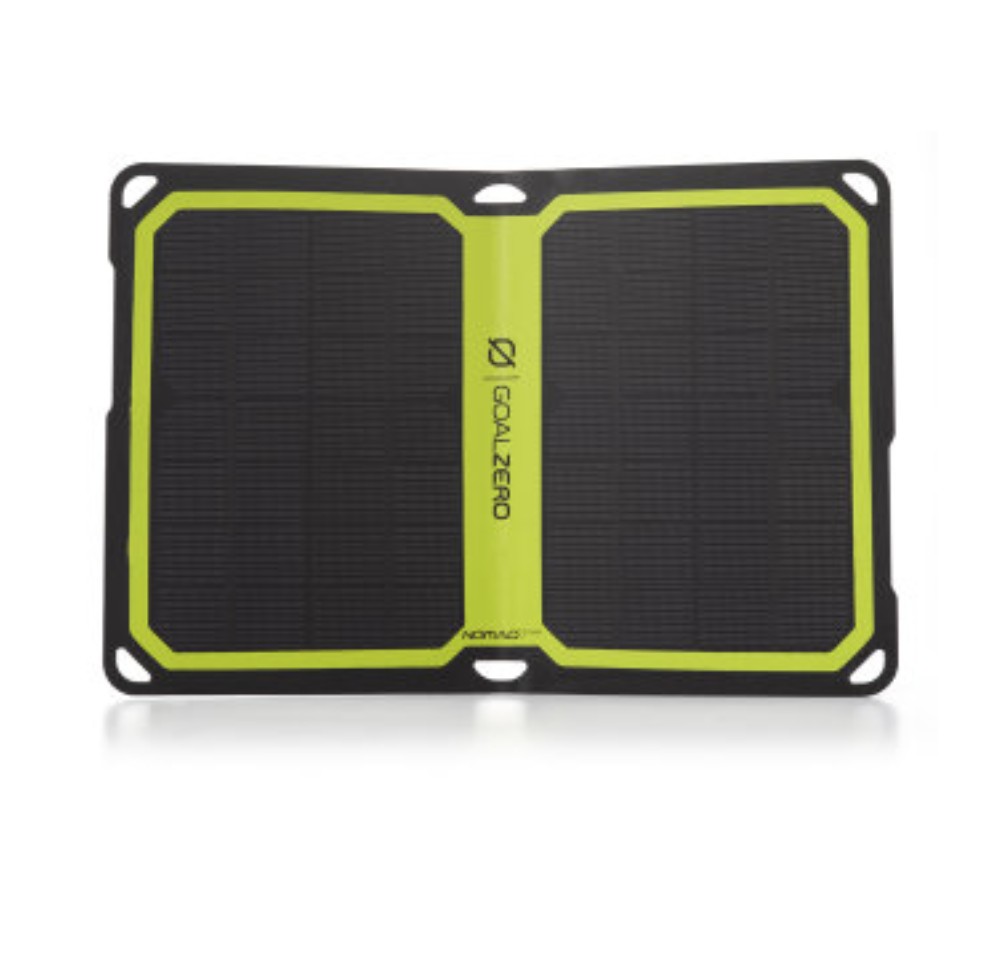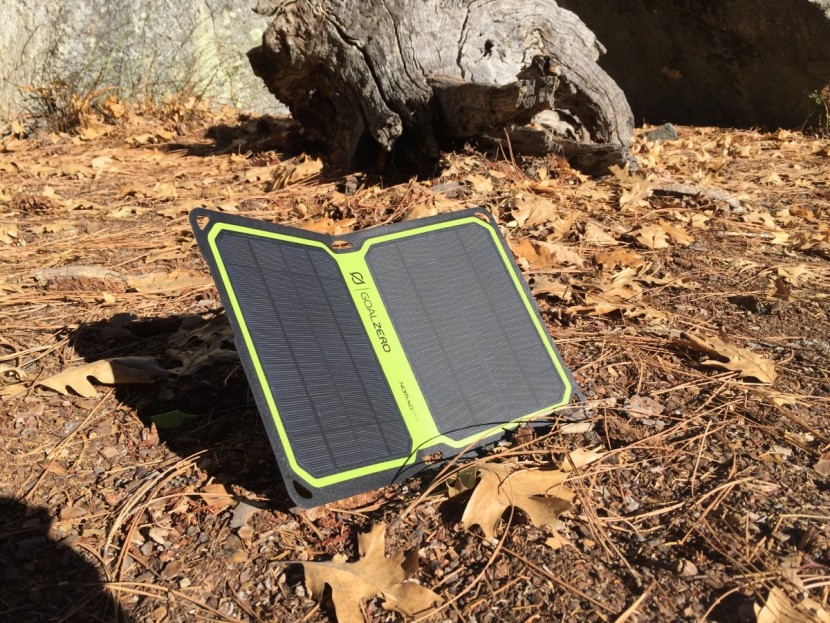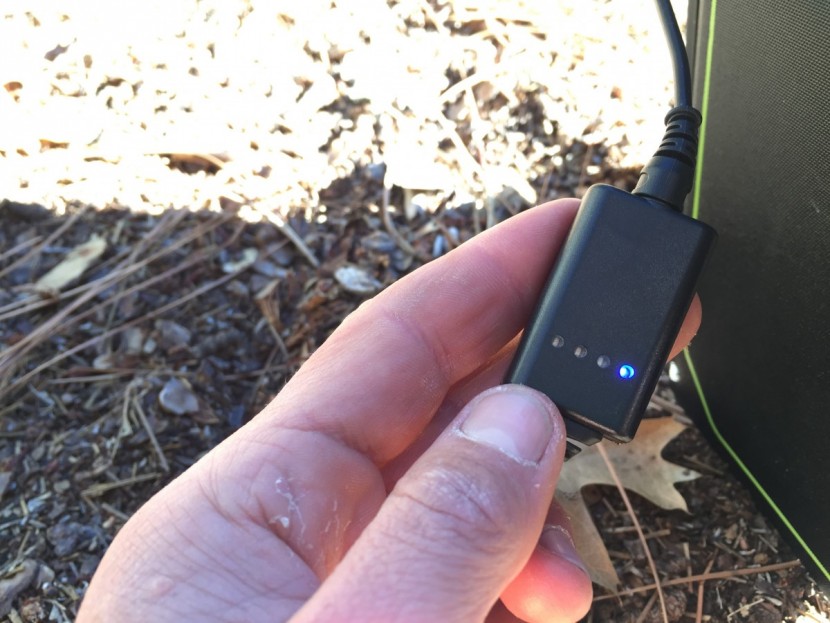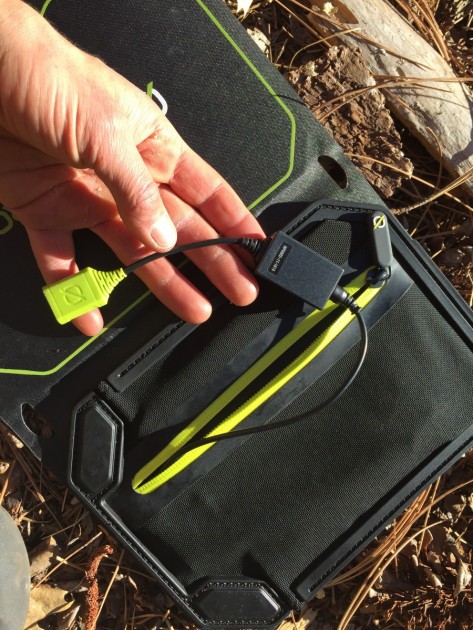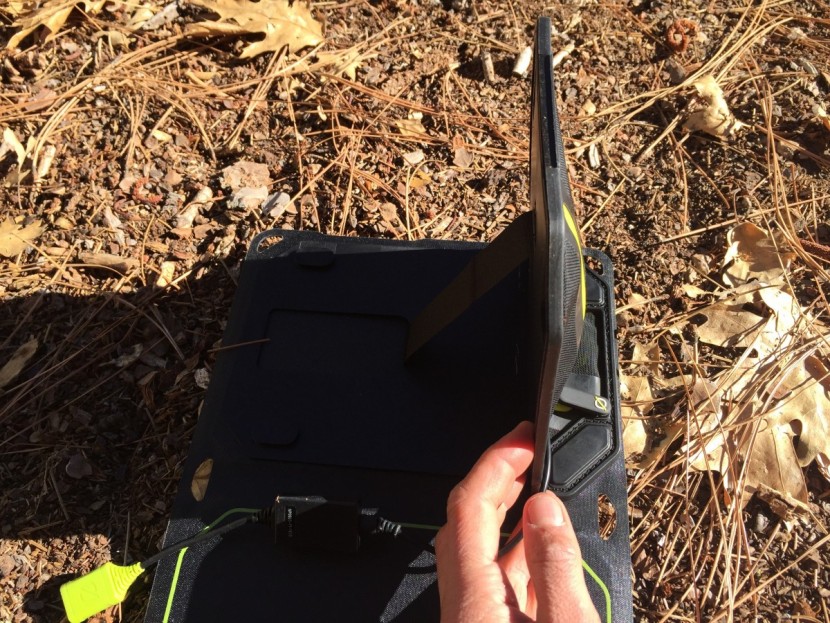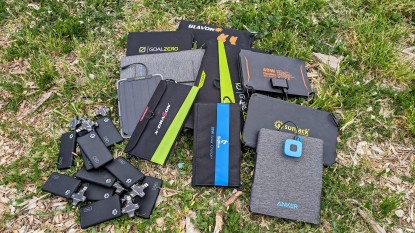Goal Zero Nomad 7 Plus Review
Our Verdict
Our Analysis and Test Results
In most metrics, except for weight and portability, the Nomad 7 did not stand out. Though the panel did not perform outstandingly regarding output power and efficiency, it does have an excellent design and is a significant improvement from the previous model.
Charge Interruption Recovery
Much like other panels in this capacity range (i.e., the Renogy 5W), the Nomad 7 Plus struggled to recover a charge after an interruption in solar energy. In fact, the 7 Plus would not even re-connect to our iPhone after being shaded for a few seconds. This is a huge issue with such a lightweight and portable panel, as charging a phone or another small device is its main use. Panels with more overall output power, such as the Anker PowerPort 21, Anker Powerport Lite, Instapark Mercury 10, X-Dragon 20, and Nomad earned 8 out of 10s for this metric.
Charging Speed
In our side-by-side comparisons, the Nomad 7 Plus was one of the least efficient chargers for an iPhone 6 in direct sun. We gave each panel 30 minutes to charge an iPhone and measured the increase in battery with each panel. The Nomad 7 Plus only managed to charge the phone 18%. This was less than the previous model, the Nomad 7 which managed to charge a phone 33% in the same time. For charging the external battery, the Nomad 7 Plus performed worse than its predecessor again by only charging our external battery 9% in four hours. It's important to remember that other panels with the same wattage, like the Renogy 5W, had dismal numbers in this category as well, since their overall output is just not as powerful as a 20W panel.
Multiple Device Charging Speed
This small panel can't charge multiple devices at once and thus is only designed with one USB port. Unlike the previous model, the Nomad 7 Plus comes with just one USB cord and no adaptors at all, making it overall more straightforward and easy to use. If charging multiple devices at once is essential to you, check out a more powerful panel, such as the X-Dragon 20W or the Anker 21W.
Durability
The panel and solar cells on the Nomad 7 Plus are strikingly durable. The panel's design and construction are much like that of the Renogy 5W, but instead of having the cells exposed to the elements at all times, the Nomad 7 folds in half, protecting the panels when the device is not in use. The Nomad 7 Plus compared to the PowerGreen 21W and the Instapark Mercury 10W regarding scores in the durability metric. All of these panels performed great during our testing period but had the small potential of wearing out after some use. The USB connection seems like the weakest link in the design of the Nomad 7 Plus, as it is external and exposed to environmental wear and tear.
Weight & Portability
Its design is what makes up for the Nomad 7 Plus' lack of efficiency and power. The panel is lightweight and very portable, which adds to the allure of Goal Zero products in the outdoor community. The Nomad 7 Plus weighs .6 pounds, or 9.5 ounces, making it the second lightest panel in this review, second only to the super minimal Renogy 5W. This is important if you're planning on taking this panel on long trips or using it in the backcountry, where weight truly matters. For a more efficient, but still lightweight panel, check out the Anker PowerPort 15W, which weighs 3 ounces more than the Nomad 7 Plus.
Best Application
This panel shines it its rugged design and durability. For those looking to charge small devices in the backcountry, the Nomad 7 Plus is a good option. It is lightweight, portable, and can stand up to the elements. The downsides are that it is not very powerful and cannot charge multiple devices at once. It can be used in conjunction with other Goal Zero products, though, so you can always add more power if the 7 Plus is not enough.
Value
For $100, the Nomad 7 Plus is expensive for the output capacity it has. This is a major deterrent from buying this product, as it is really not any better than panels made by lesser-known brands. This panel is also $20 more than the previous model, yet still has many of the same issues with charging that the later version did.
Conclusion
For the price, it was hard for us to rationalize purchasing this panel for the way it performed in our side-by-side comparison testing. Many of the lesser-known panels performed better than the Nomad 7 Plus overall, even if they lack the snazzy design that Goal Zero is known for. Though its sleek, lightweight and portable, the efficiency is lacking and the price is a bit too high.


